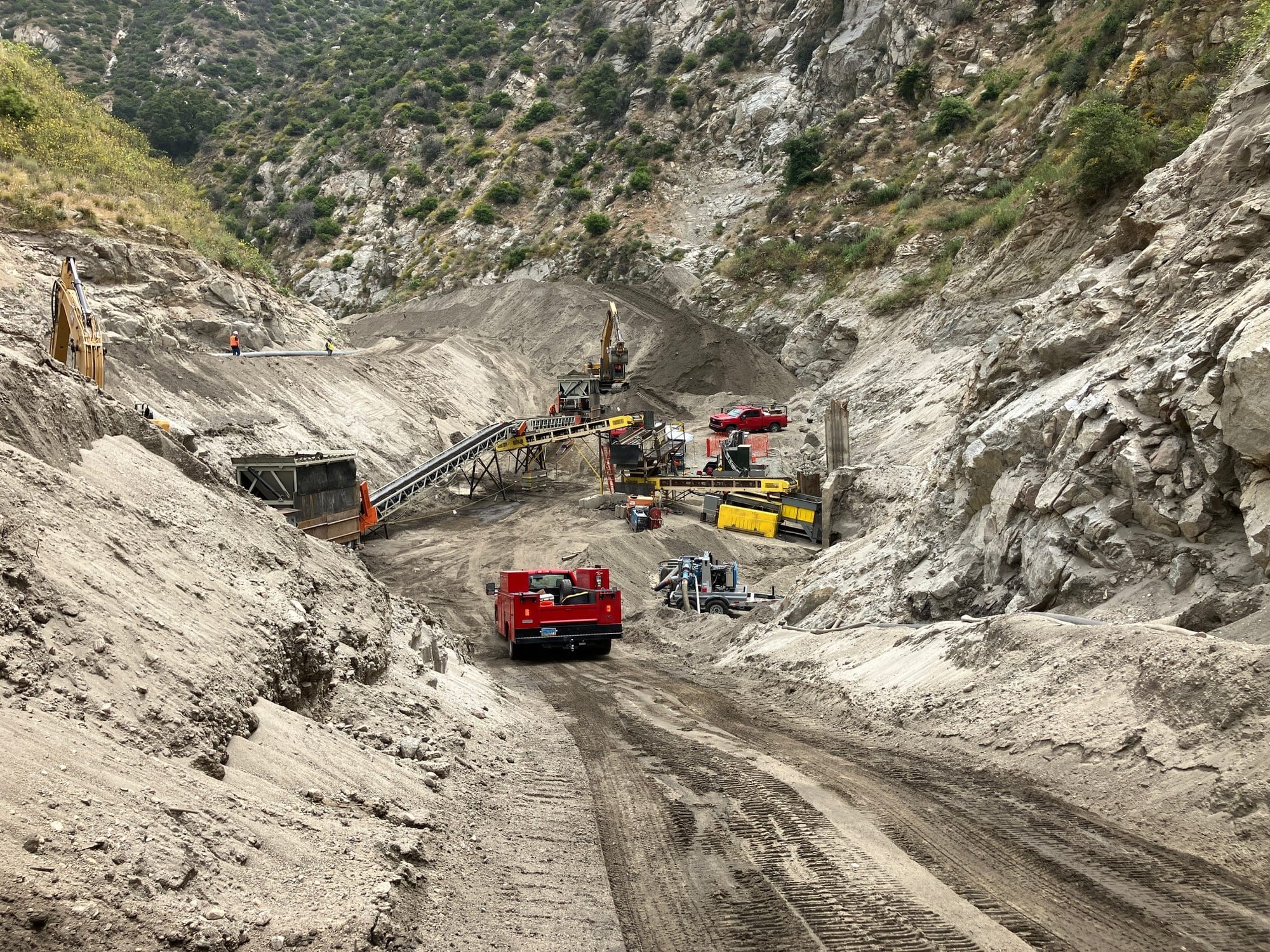
Ames crews are off to a productive second season of removing sediment and debris from the reservoir behind the 96-year-old Santa Anita Dam in Los Angeles County, California.
“Everybody here has played an important part in making this job a positive working environment. Most crew members have been exposed to new challenges and persevered to make this job successful.”—Joseph Lacore, Operator Foreman
The Santa Anita project team persisted through severe weather challenges in 2023, including Tropical Storm Hilary. Work resumed this year on April 15, the first day crews were allowed to enter the reservoir for the season.
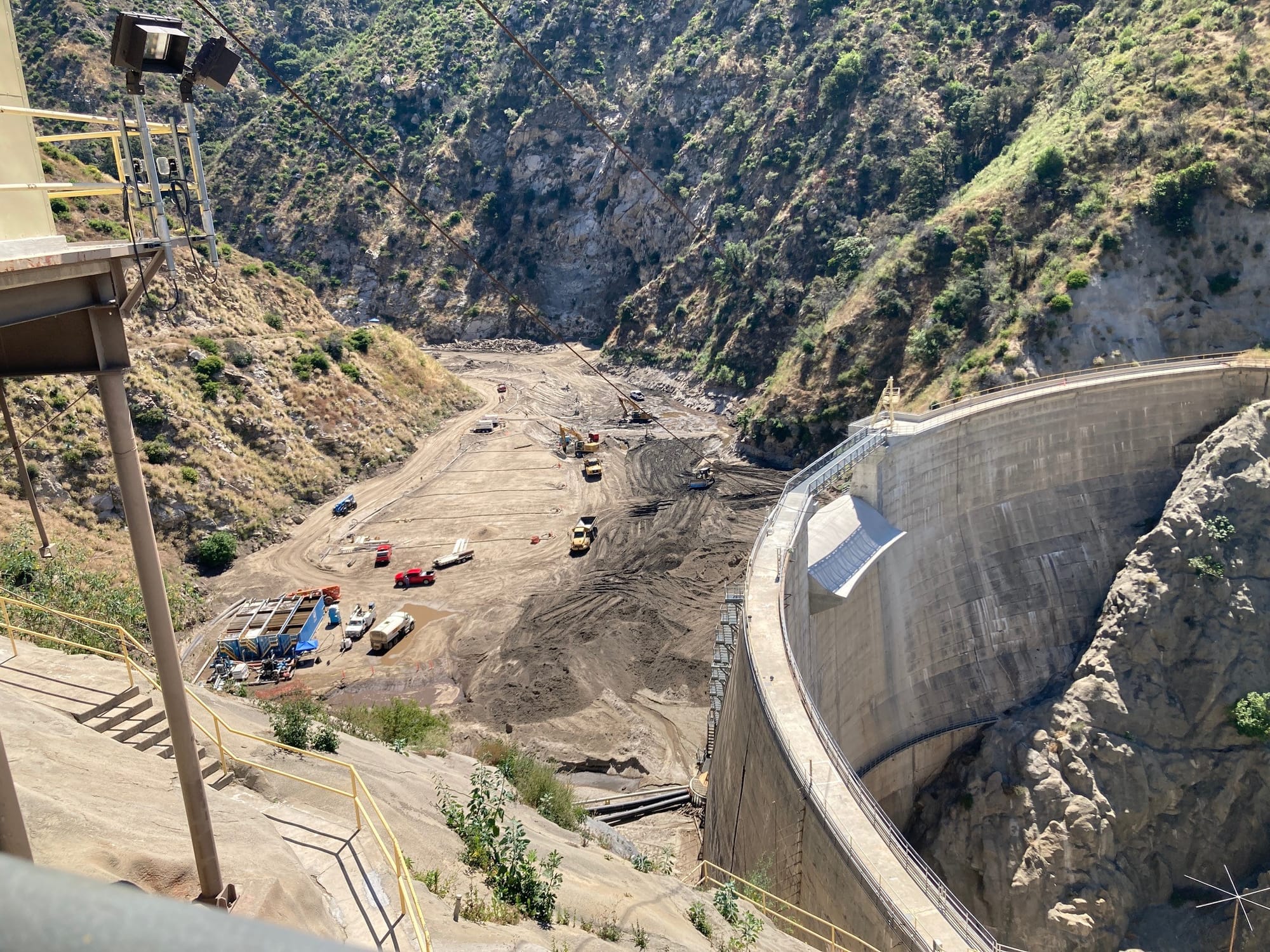
To begin the season, crews reestablished the access road into the reservoir that had been eroded by winter rains, constructed access throughout the reservoir, reestablished surface water diversion, excavated approximately 38,000 cubic yards of material to expose the tunnel portal, and reset the conveyor belts within the reservoir. Full production restarted in mid-June.
“This project has been a great place to come and work. It has put our team members in new situations, where we had to work together and come up with new ideas and solutions to make this job successful. I’ve had the opportunity to teach the new generation what the old generation taught me.” —James LeBrun, Labor Foreman
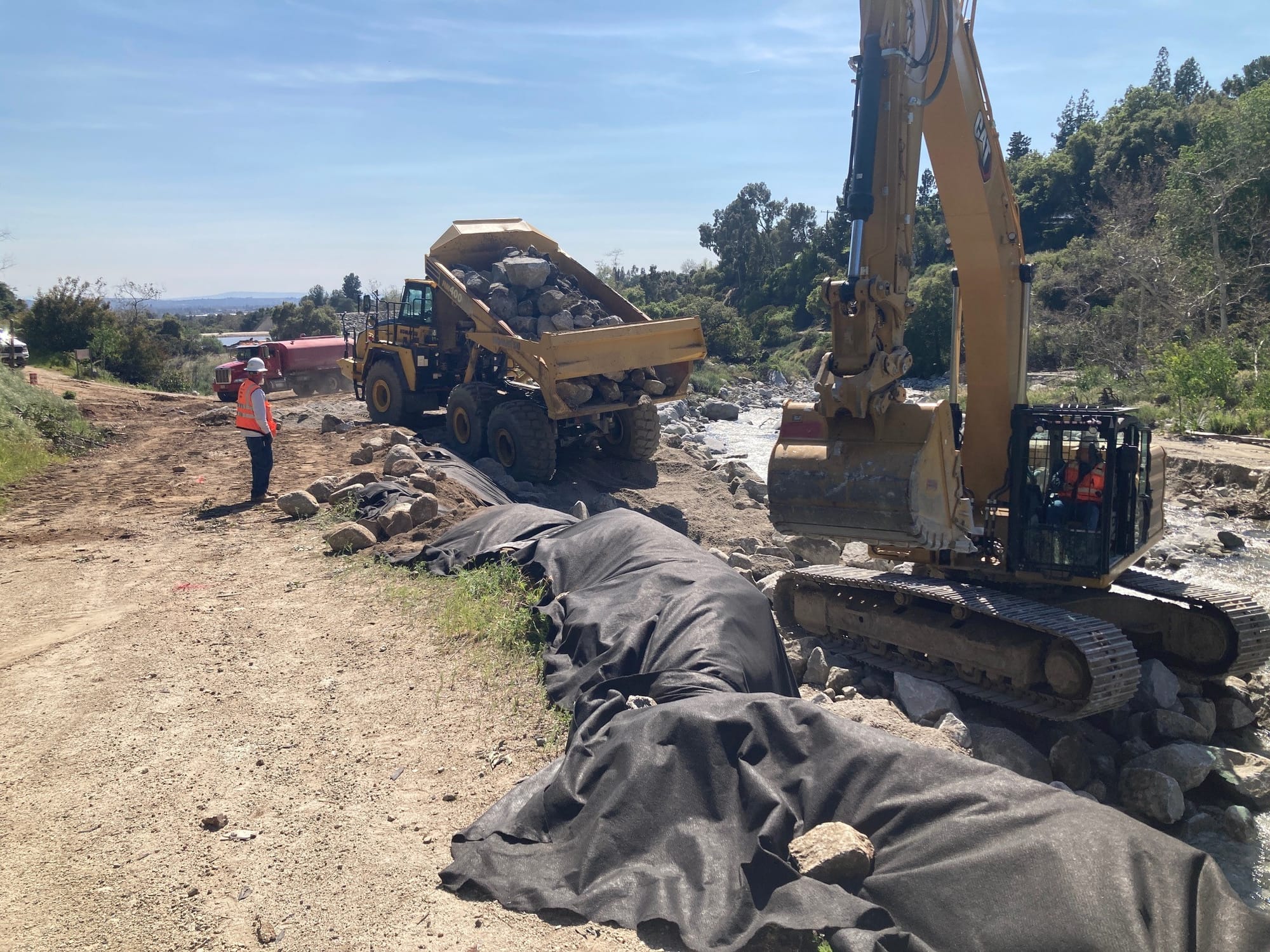
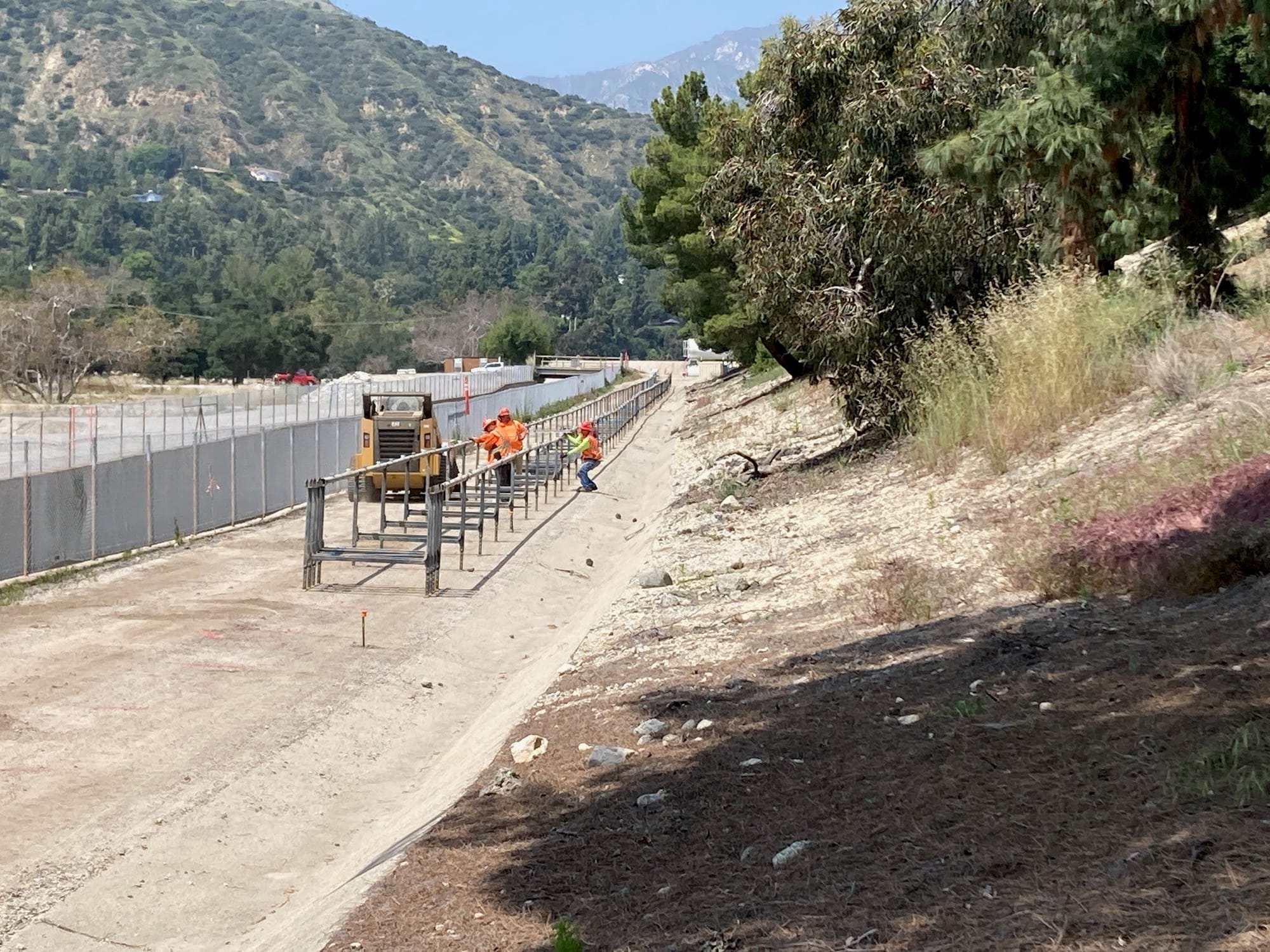
Building the portal access road and construction of the overland conveyor.
The team’s goal for 2024 is to remove all remaining sediment from the reservoir—approximately 400,000 loose cubic yards—by the end of September. This will allow enough time to finish grade and demobilize from the reservoir before the project's seasonal restriction on Oct. 15. After that date, crews will continue work on permanent drainage facilities at the sediment placement site.
“This project has allowed our crews to come a long way. Going into season 2 with the same crew, everyone has been working in harmony, which makes this project a very successful one. After 12 years working at Ames on many projects, to see the new crew come together so flawlessly and accomplish the goals of this project shows the strength of the Ames culture.” —David Lee Osborn, Operator Foreman
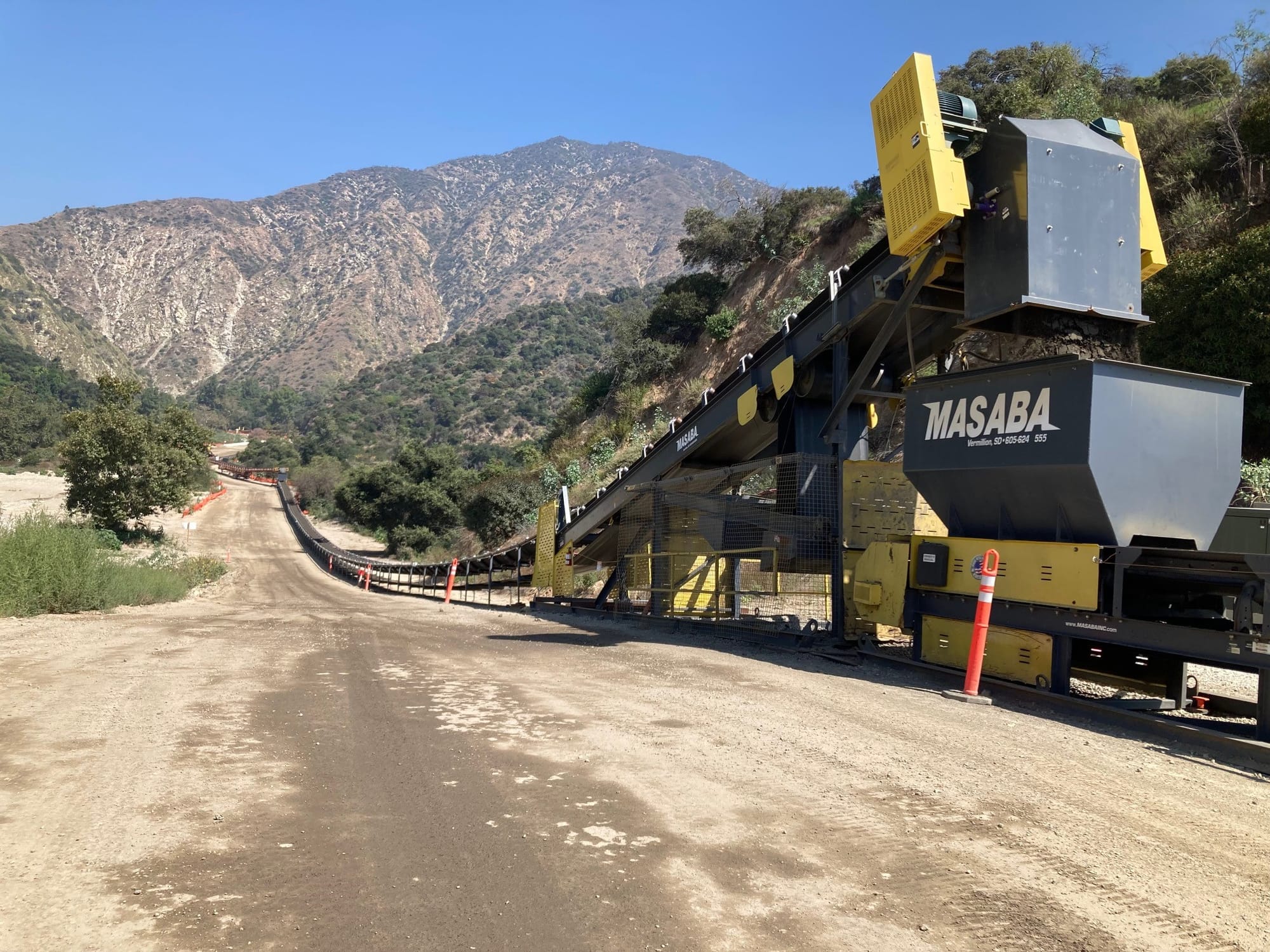
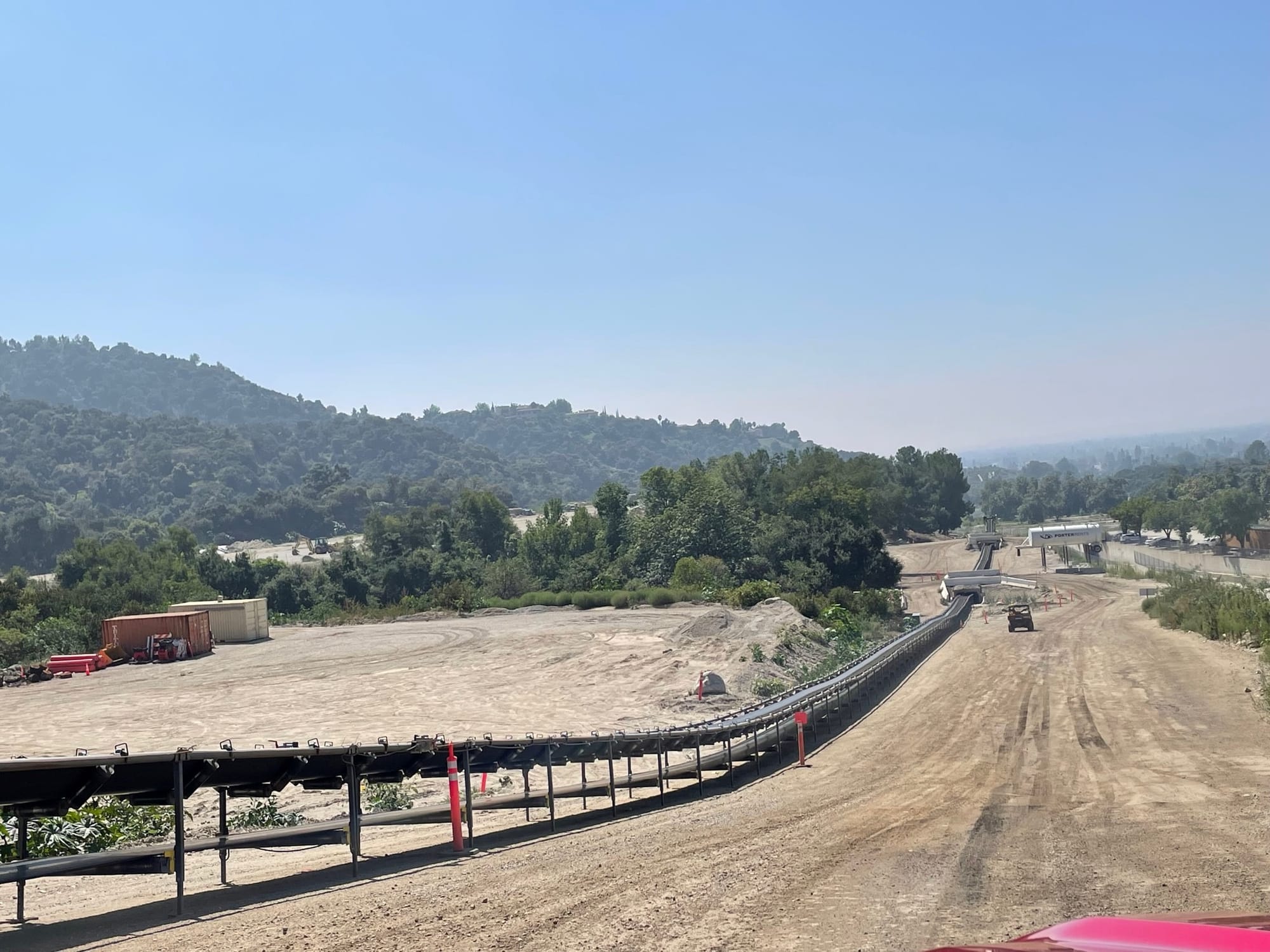
Overland conveyor running toward mountains (left) and with two crossings (right).
